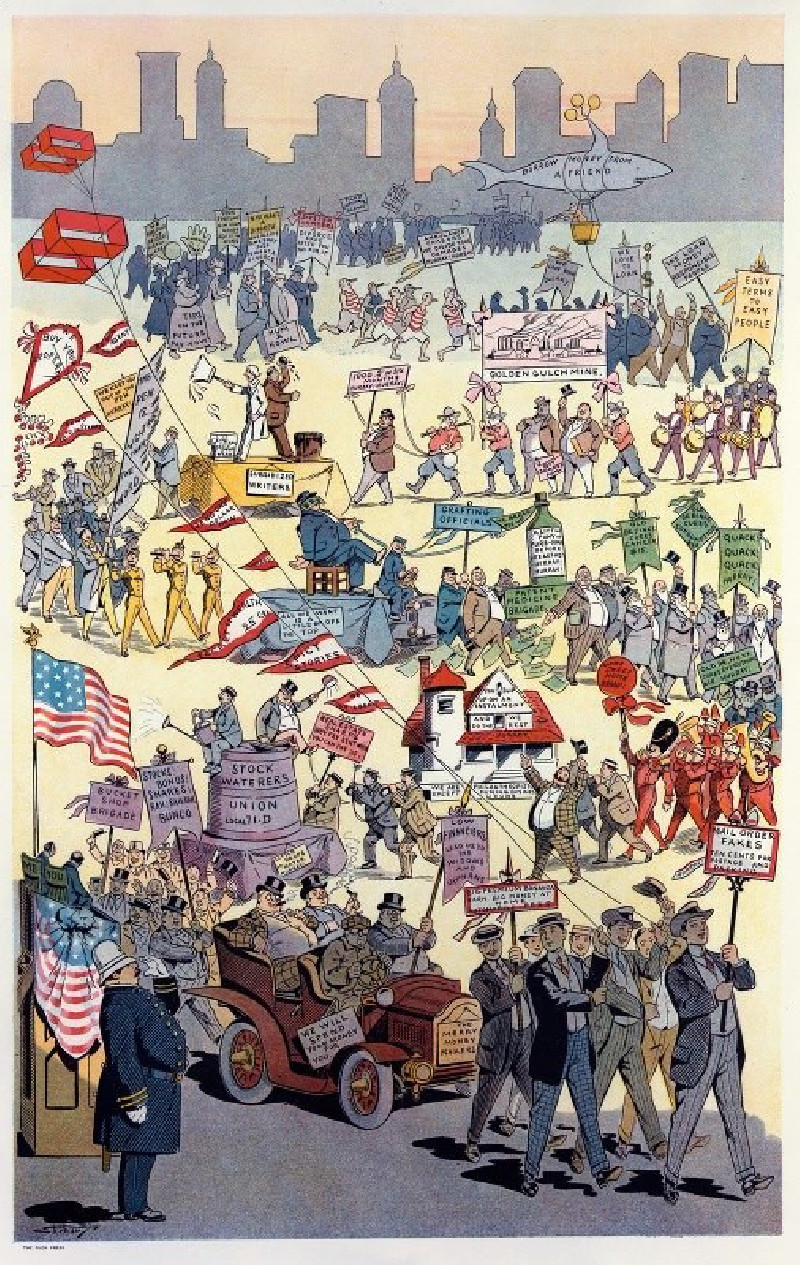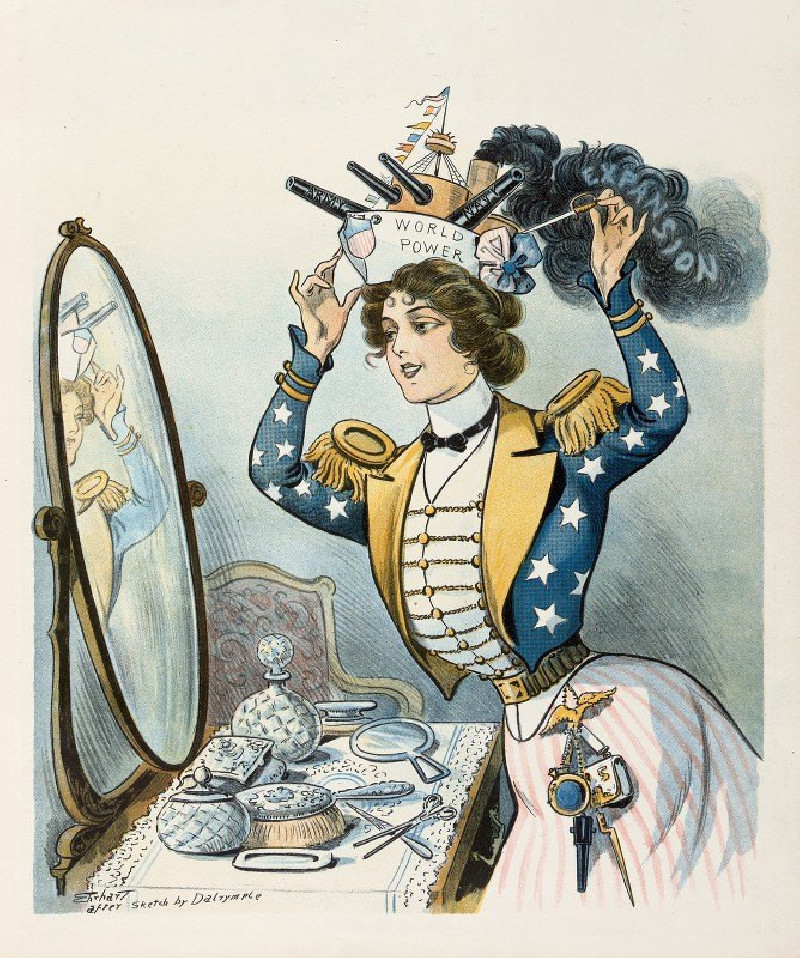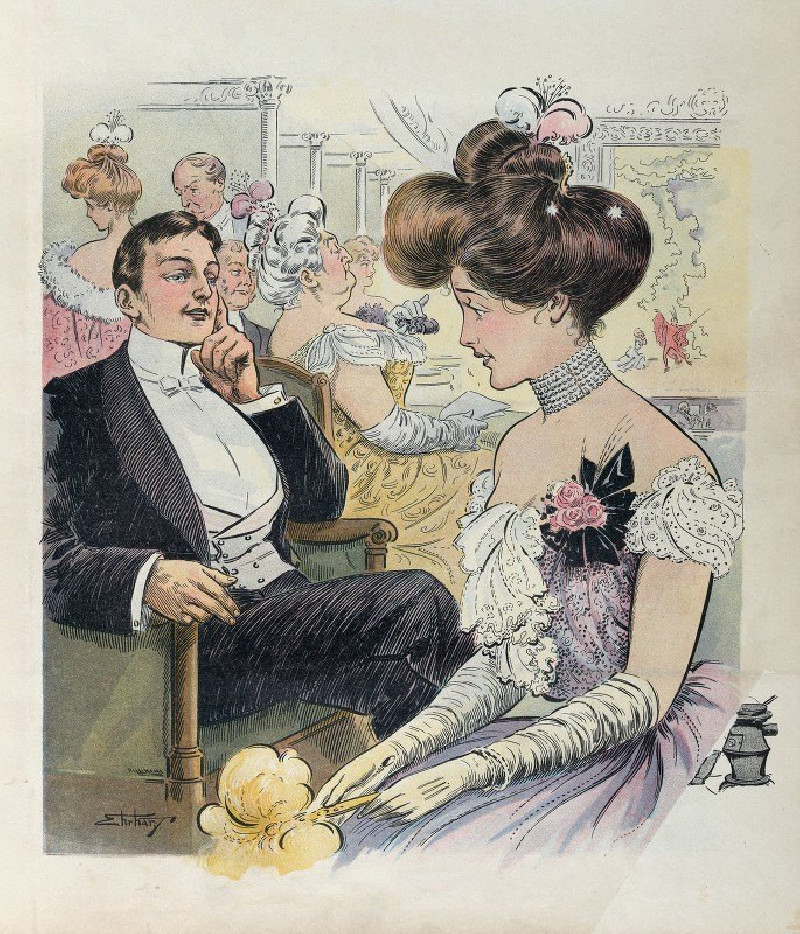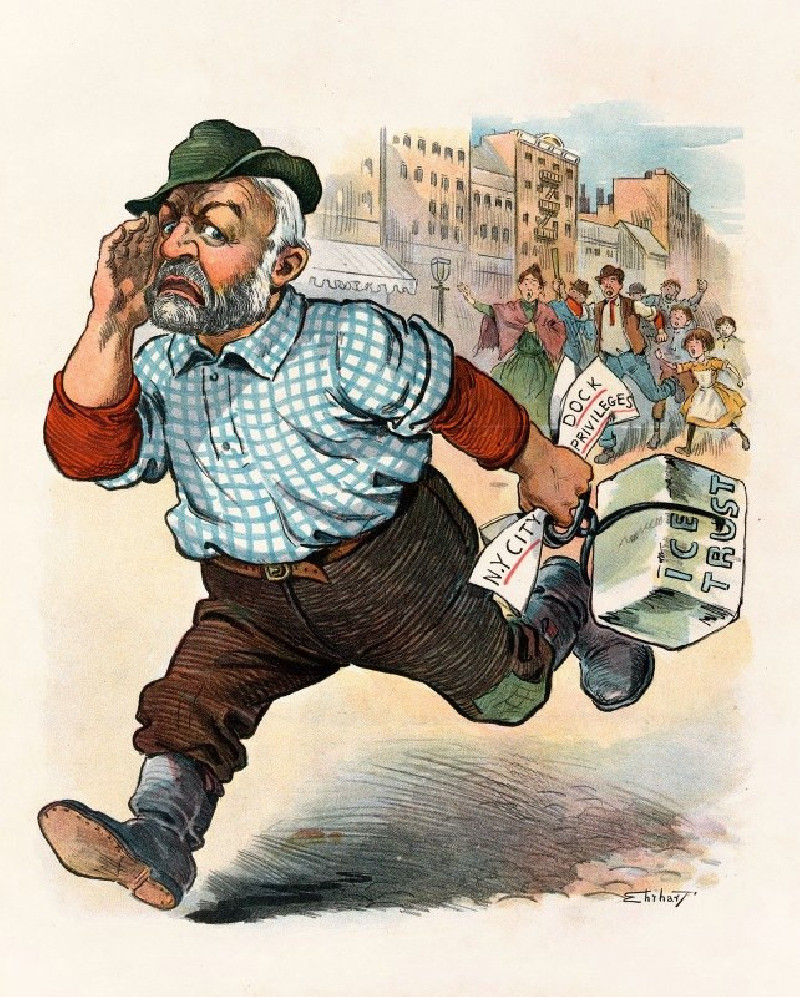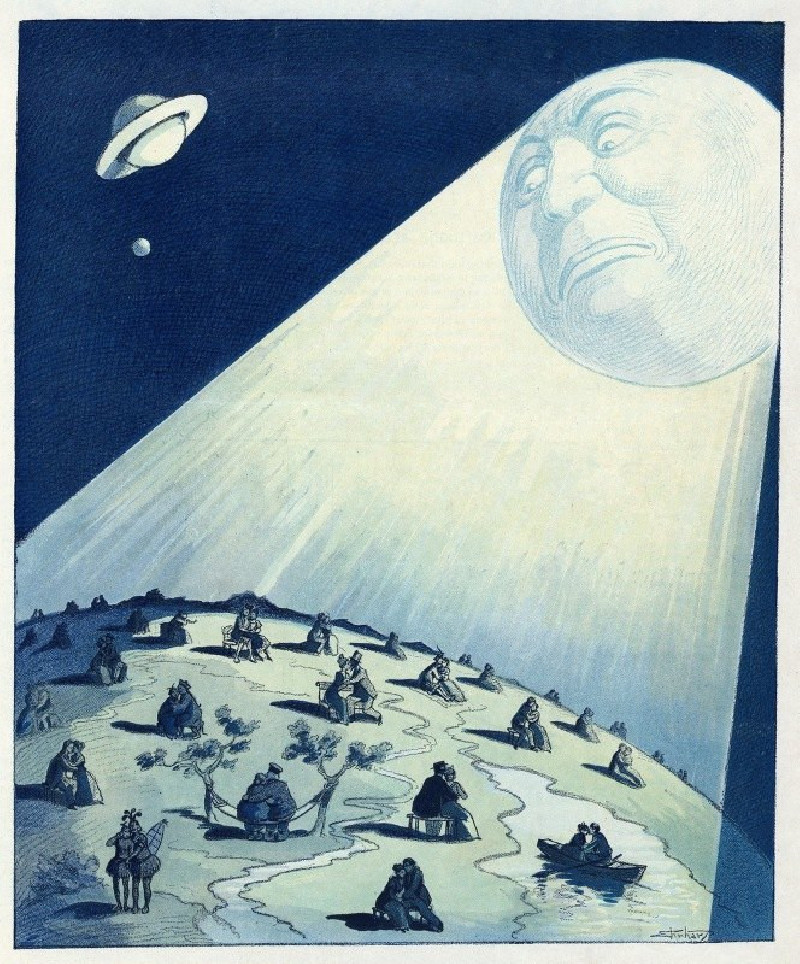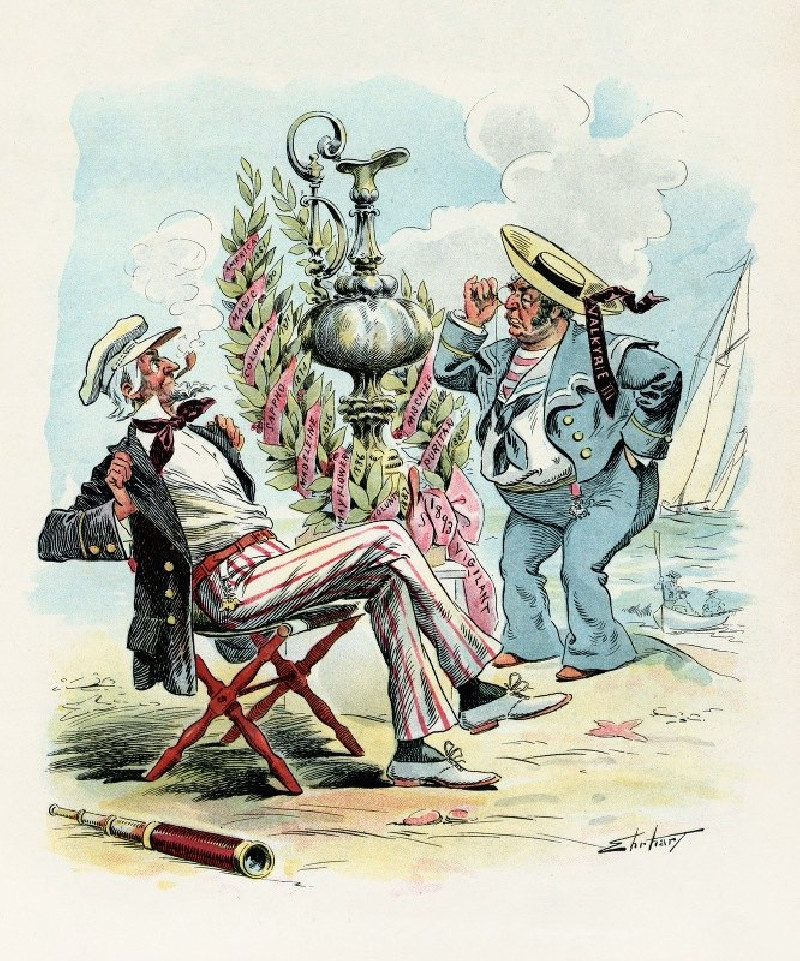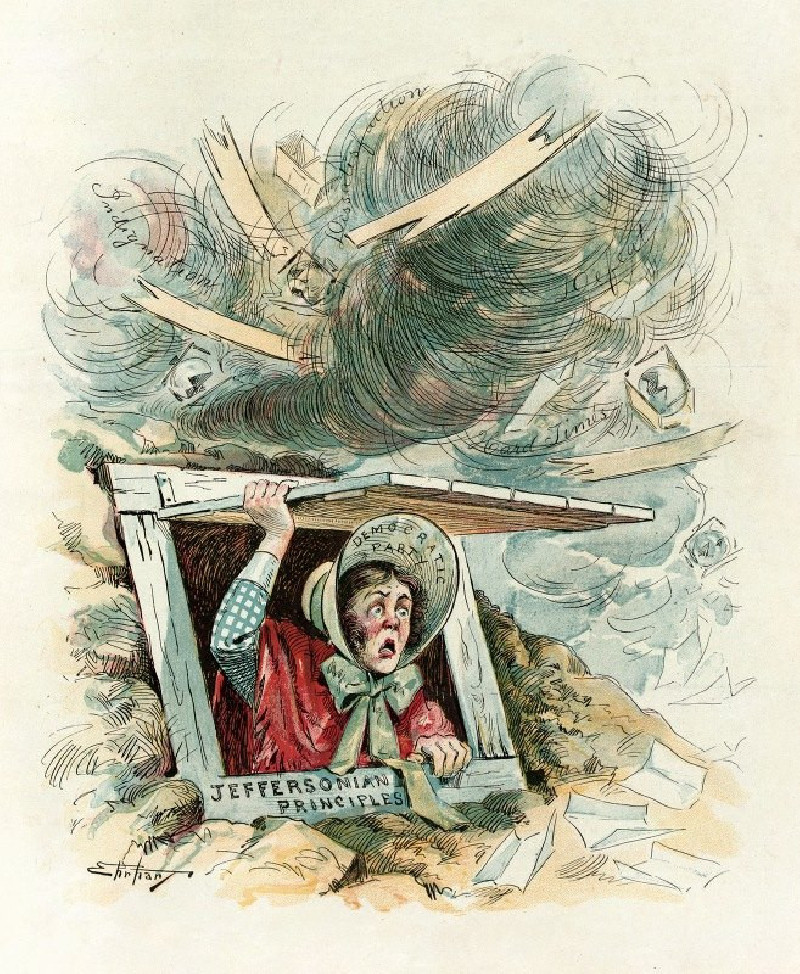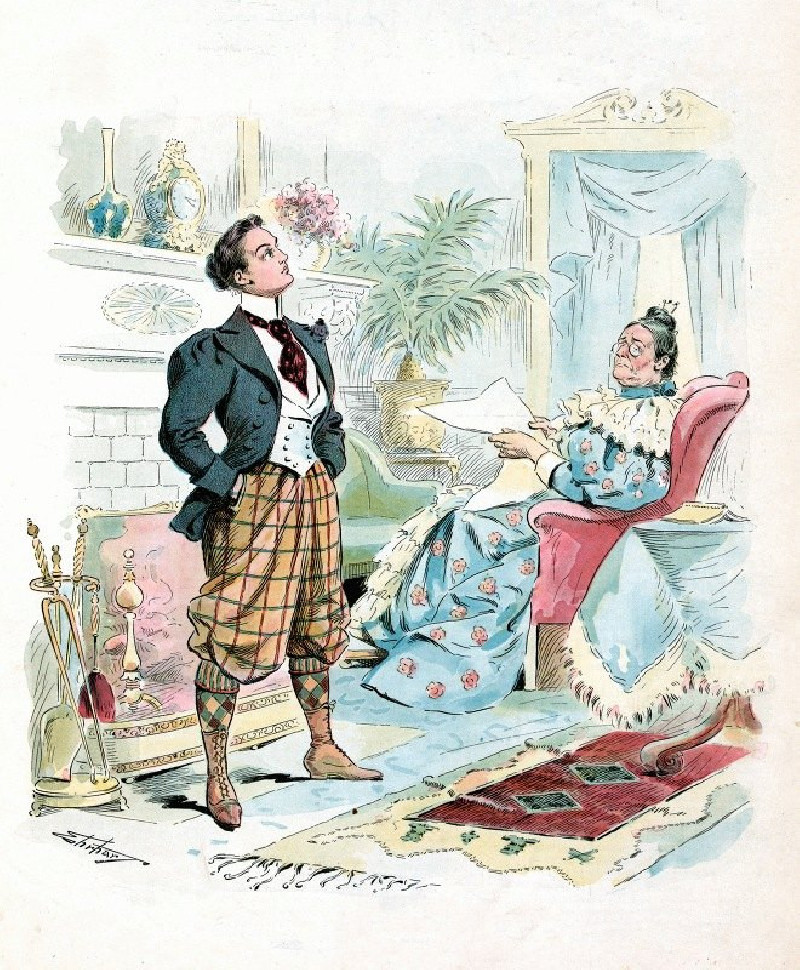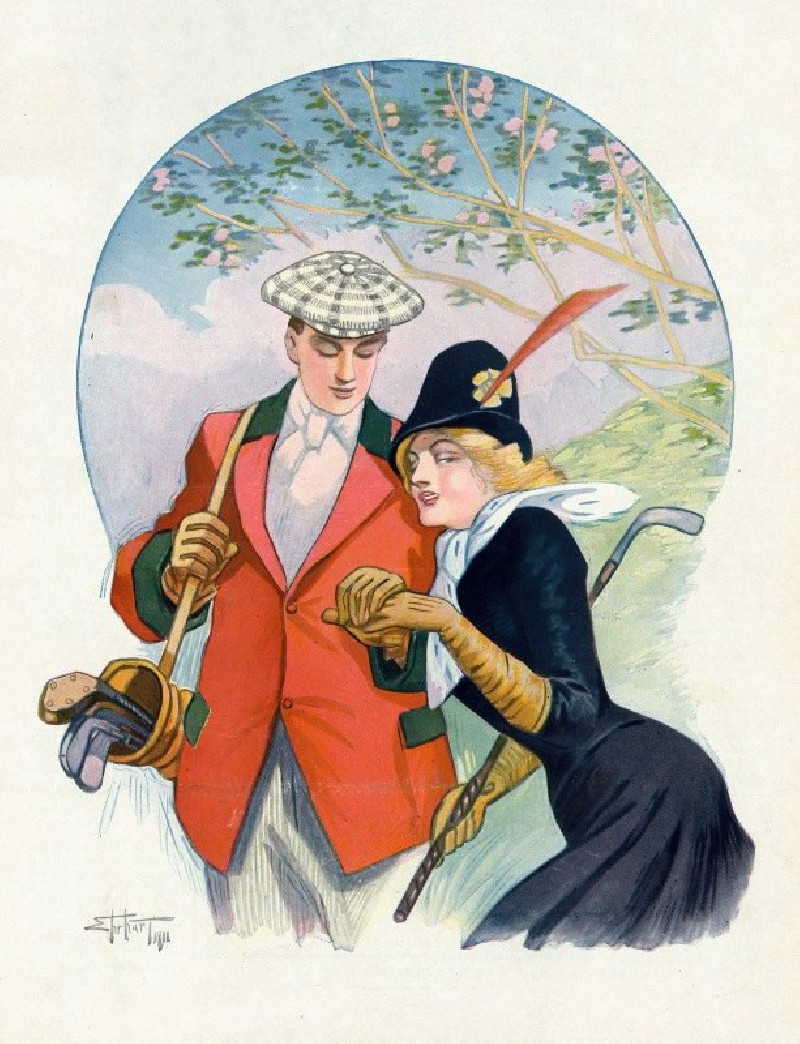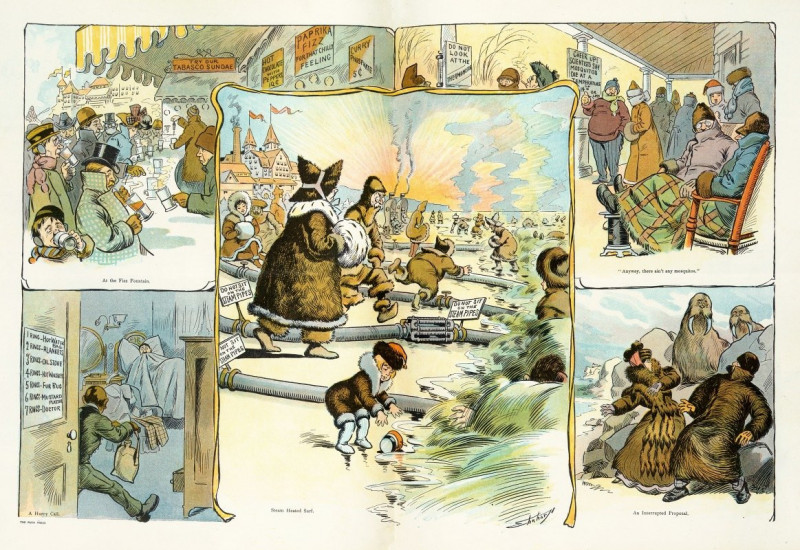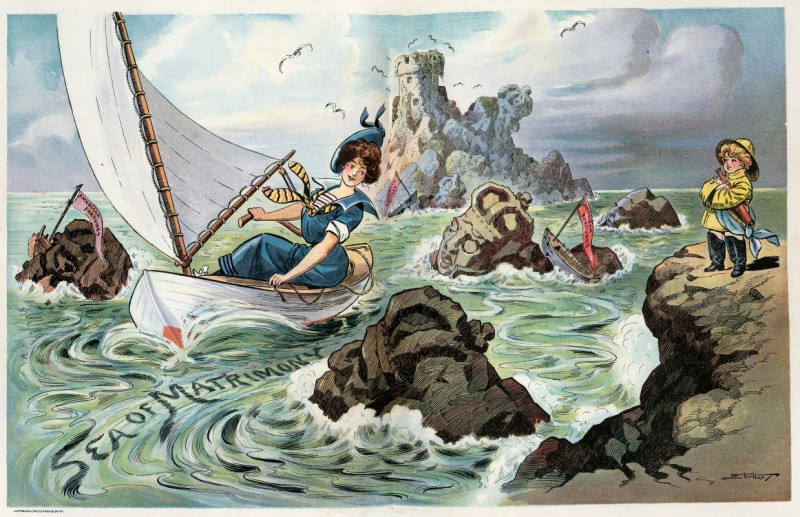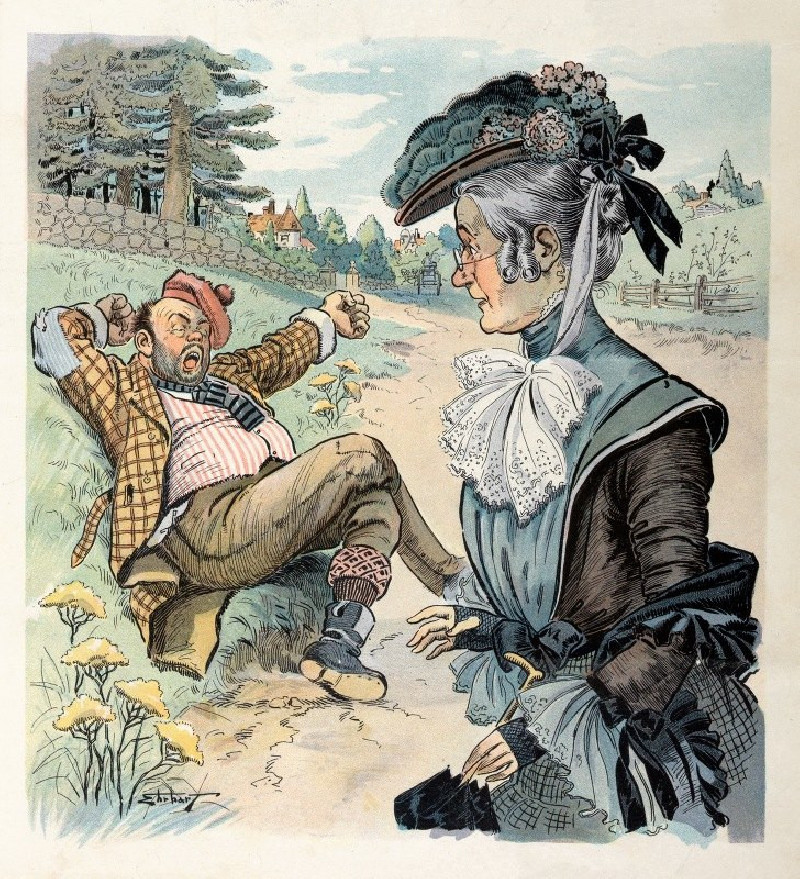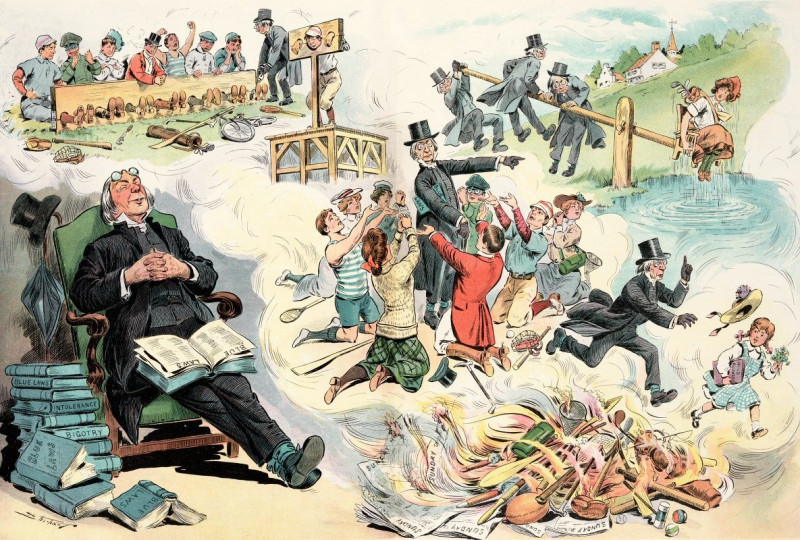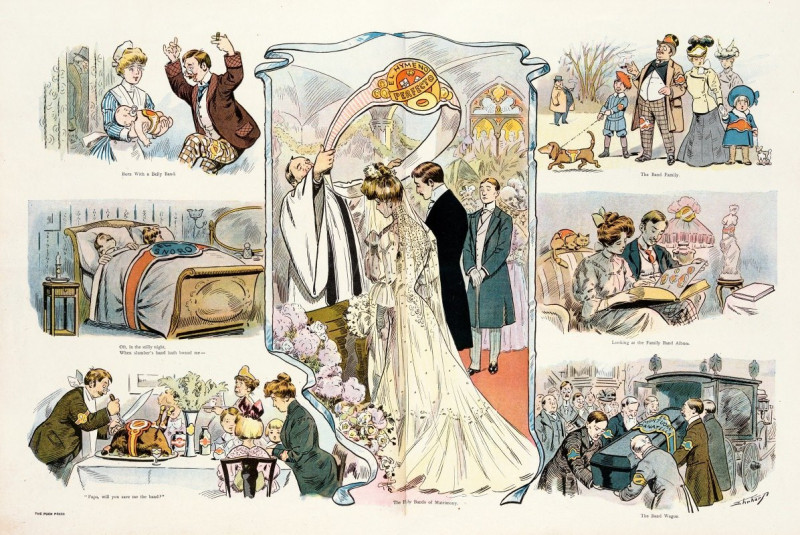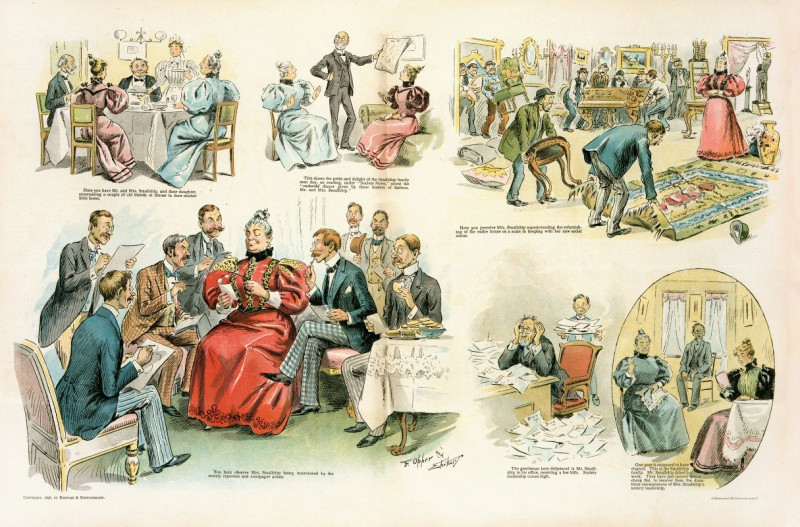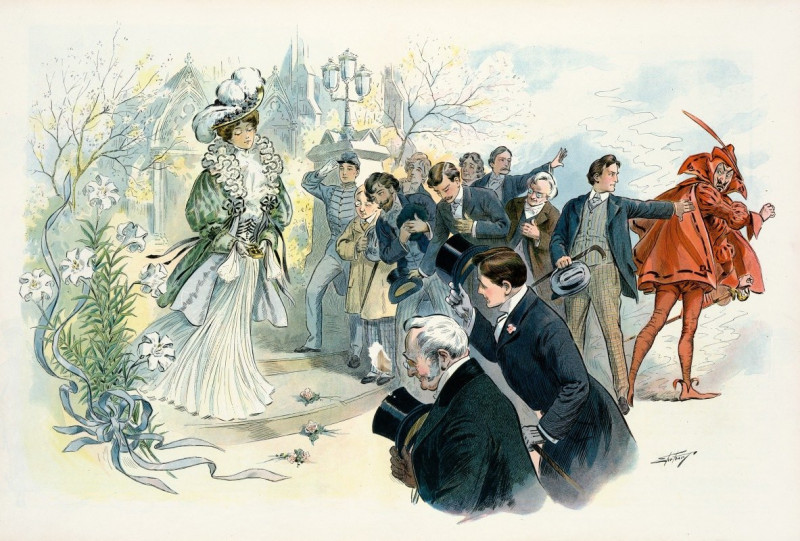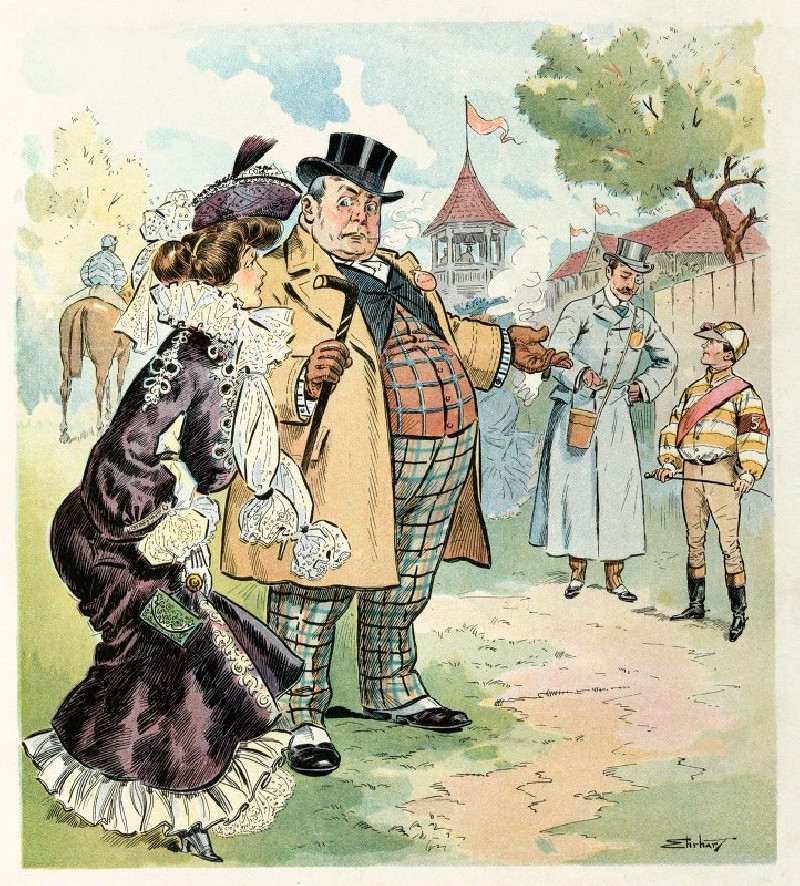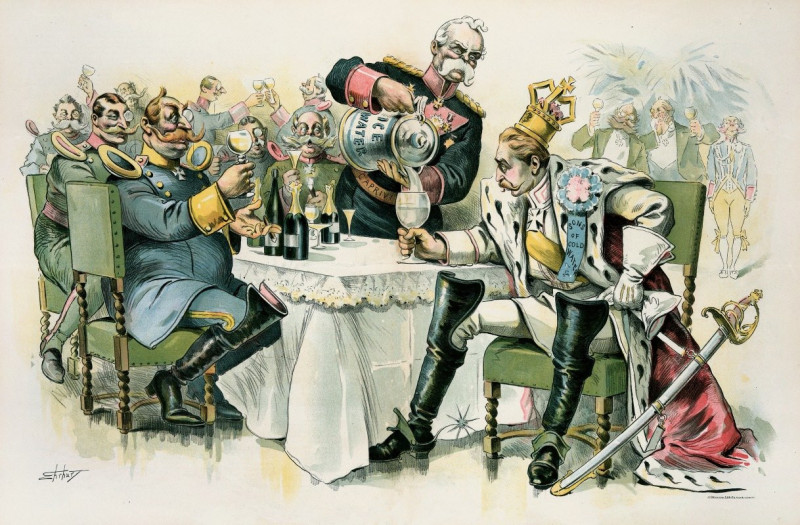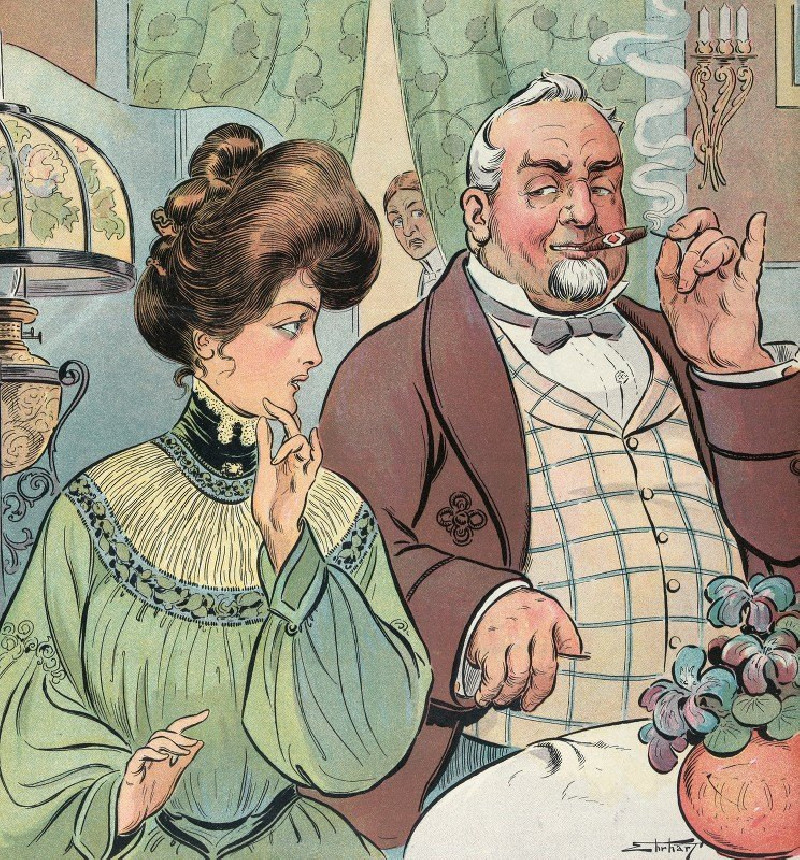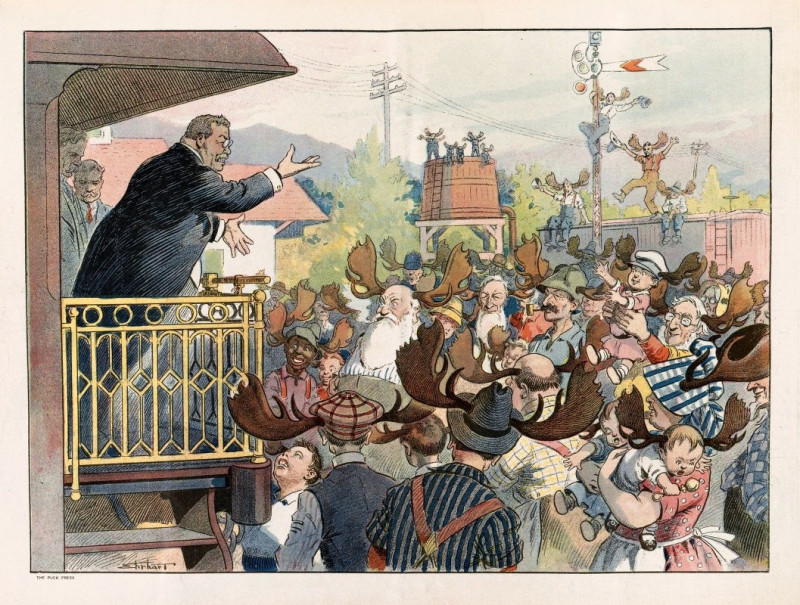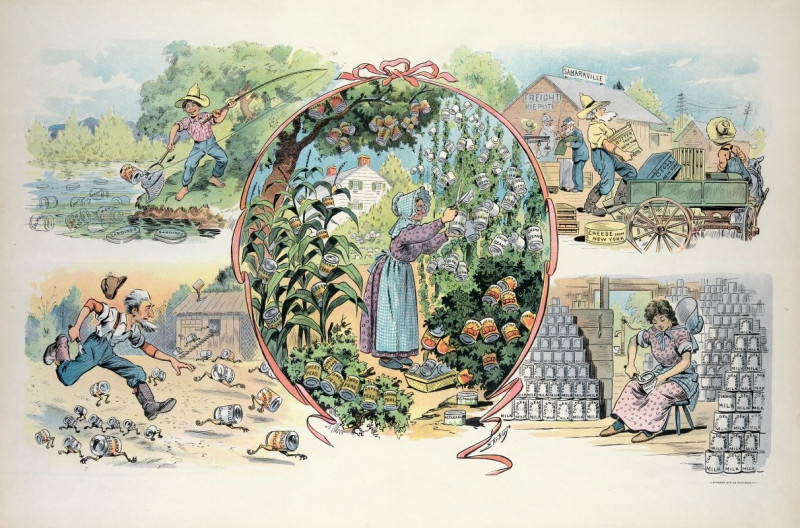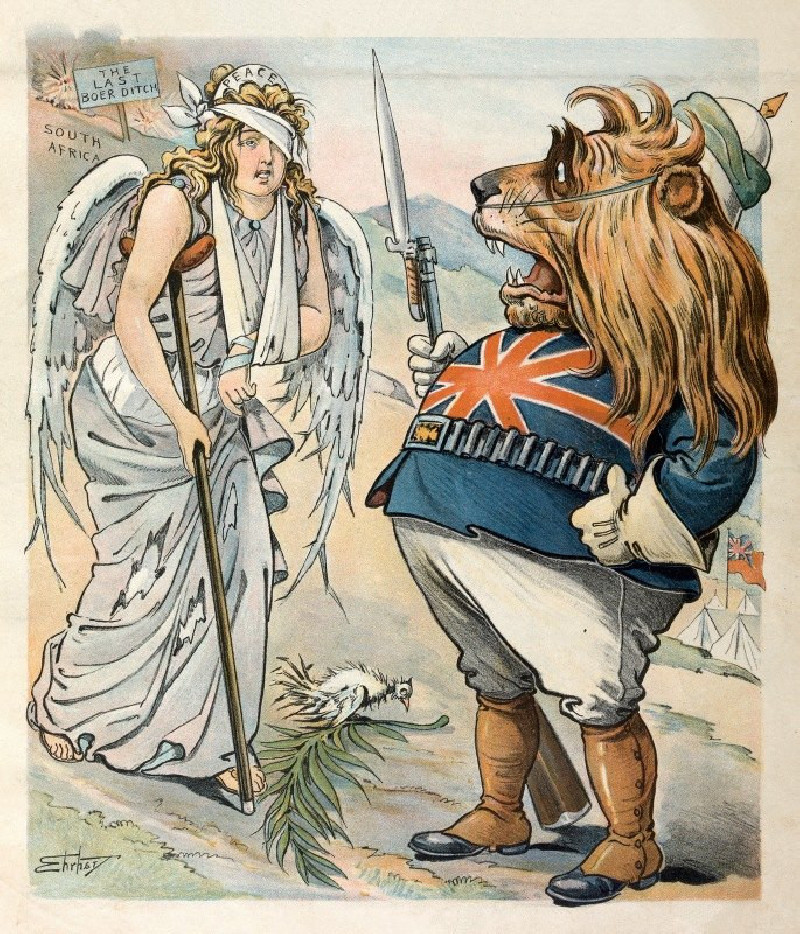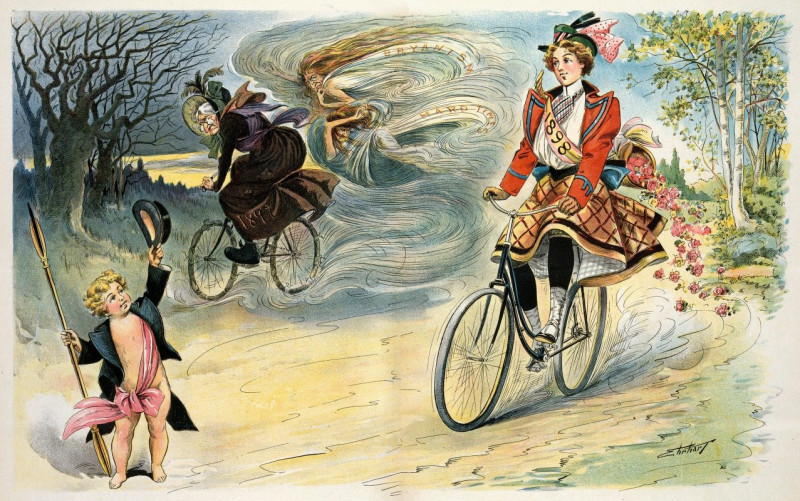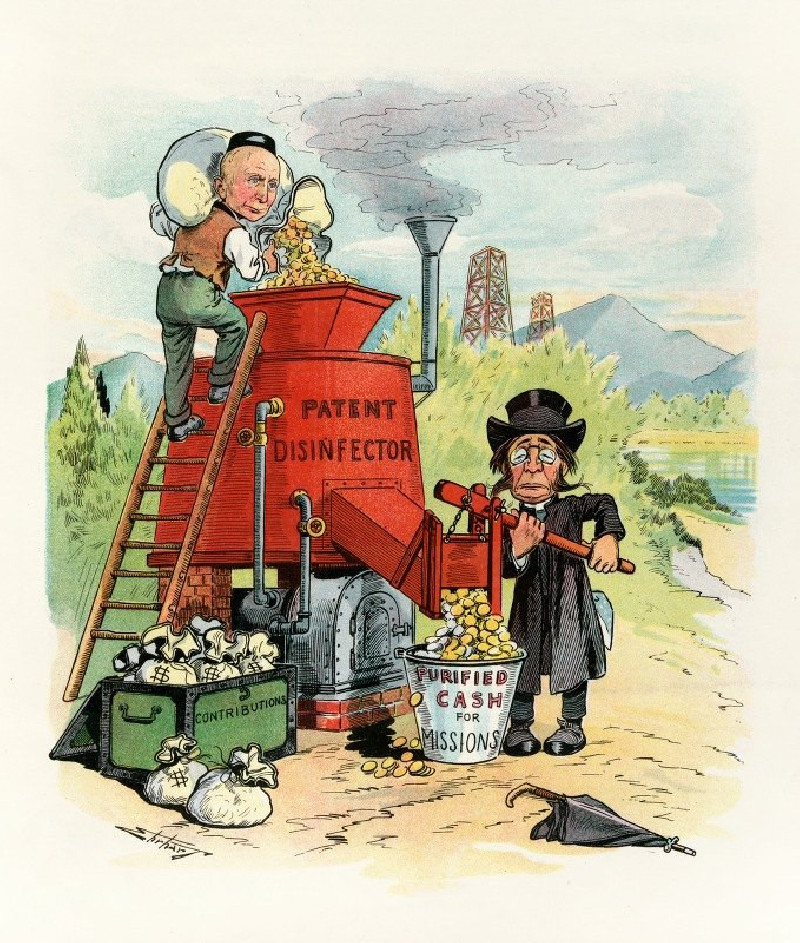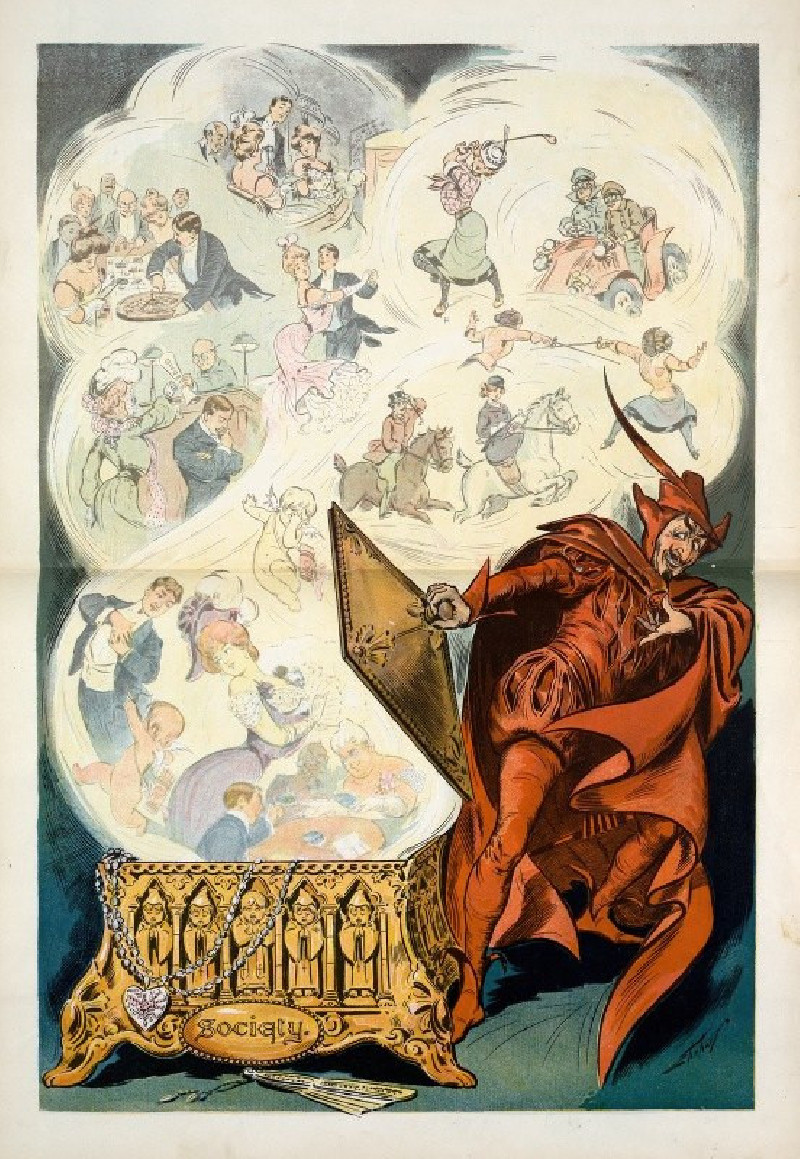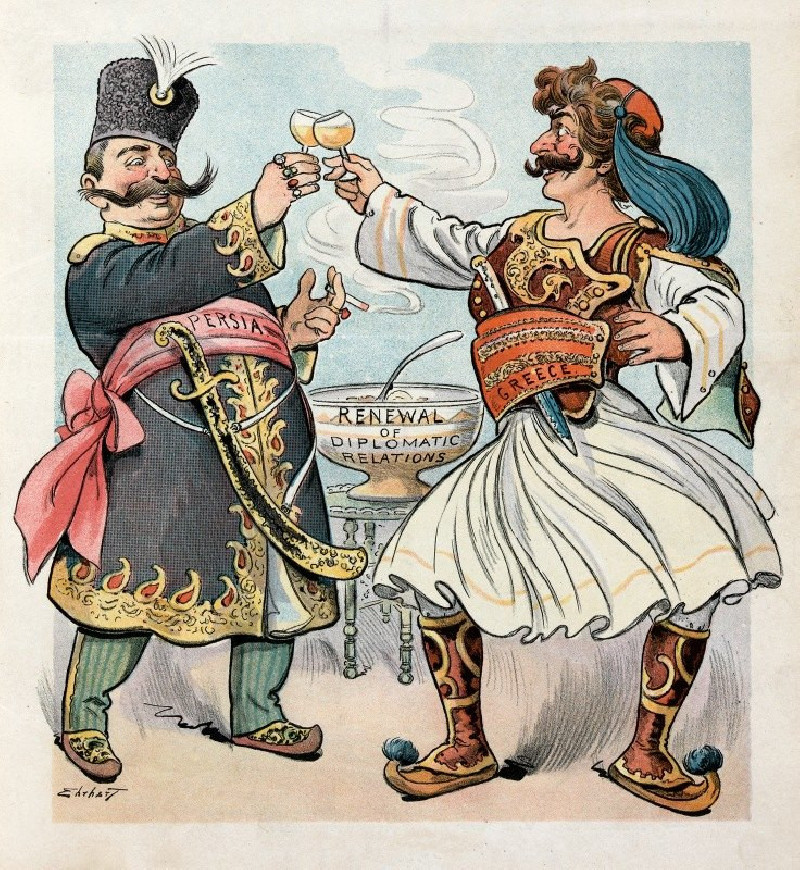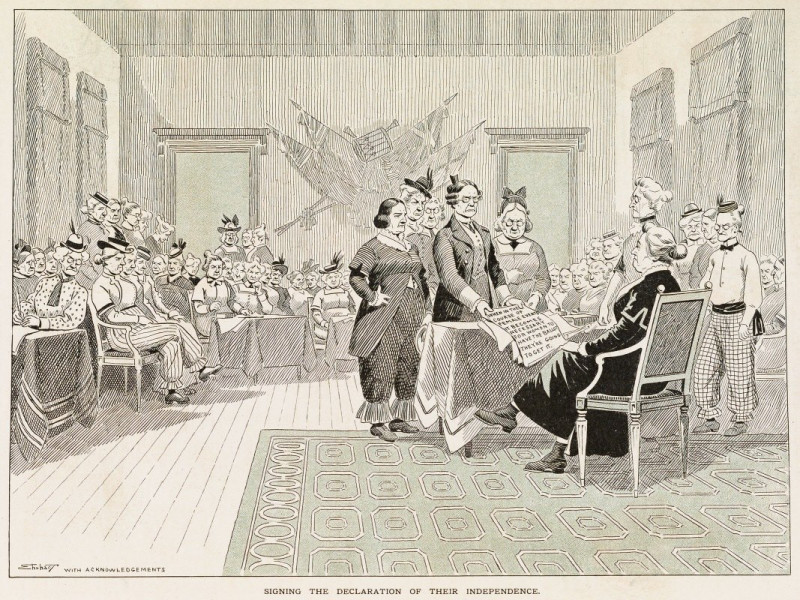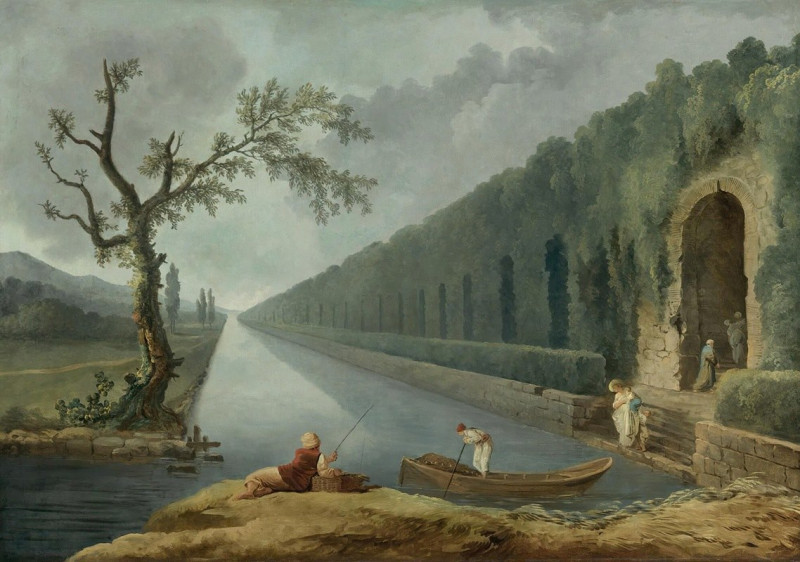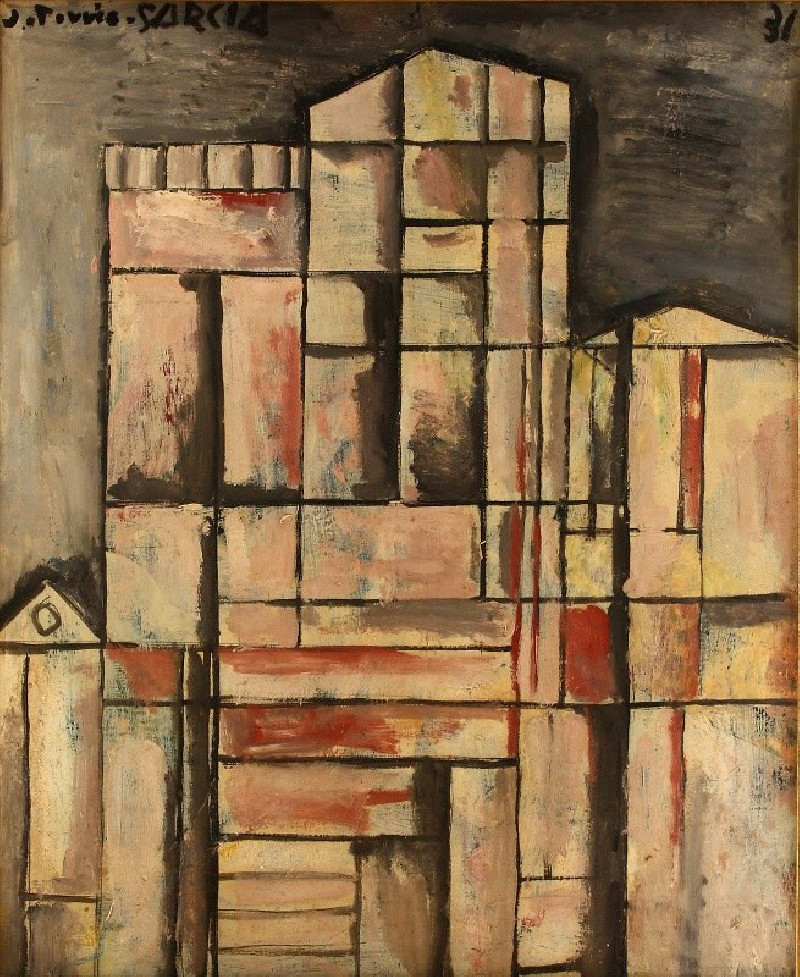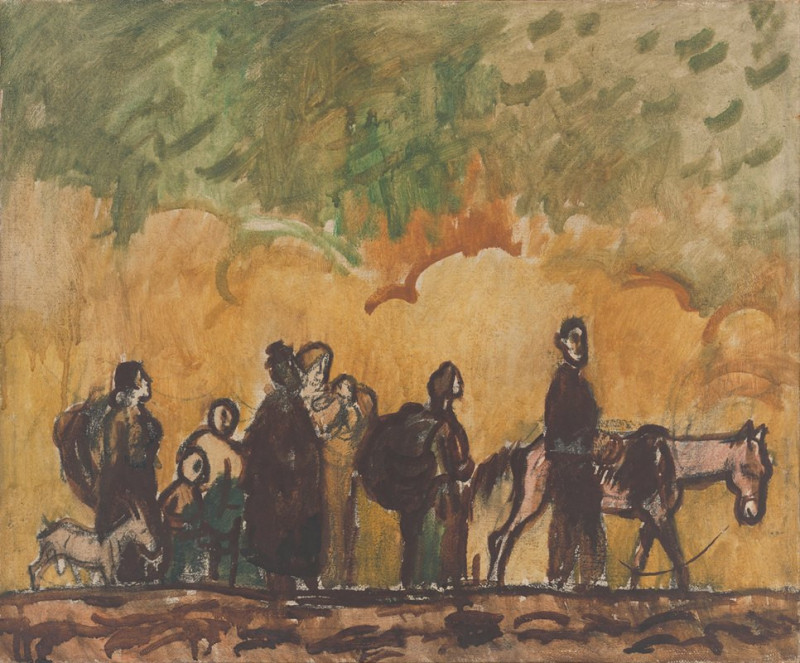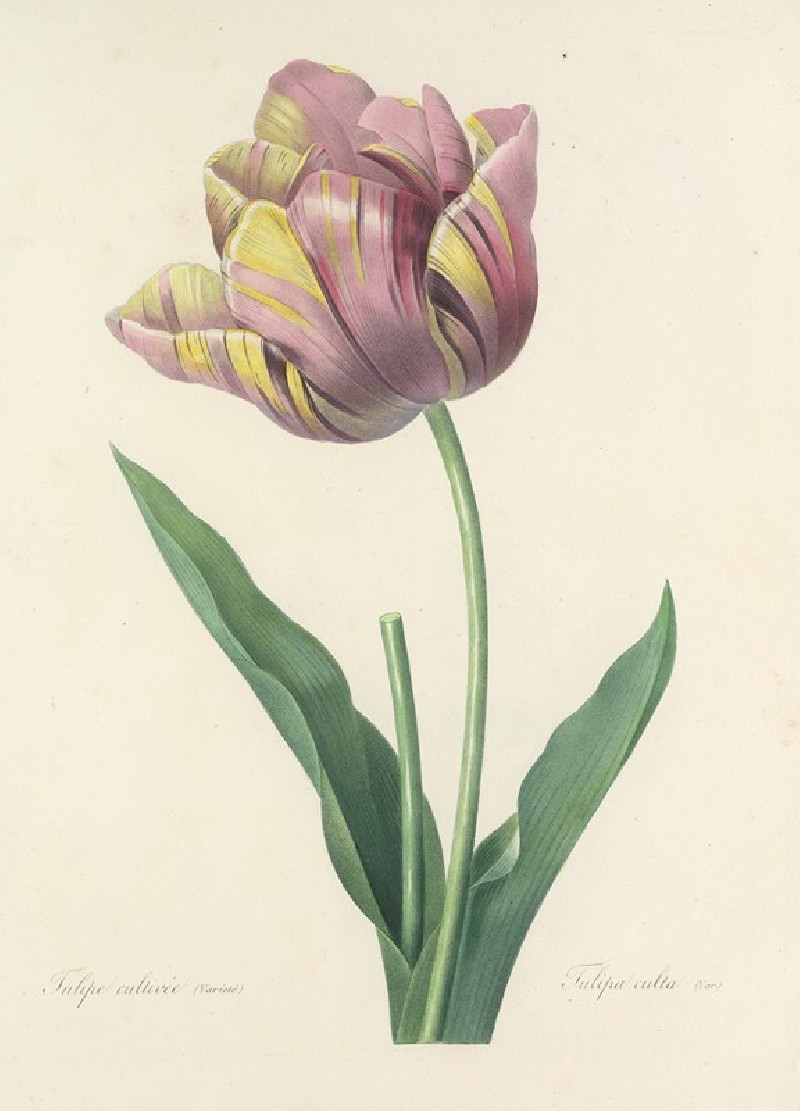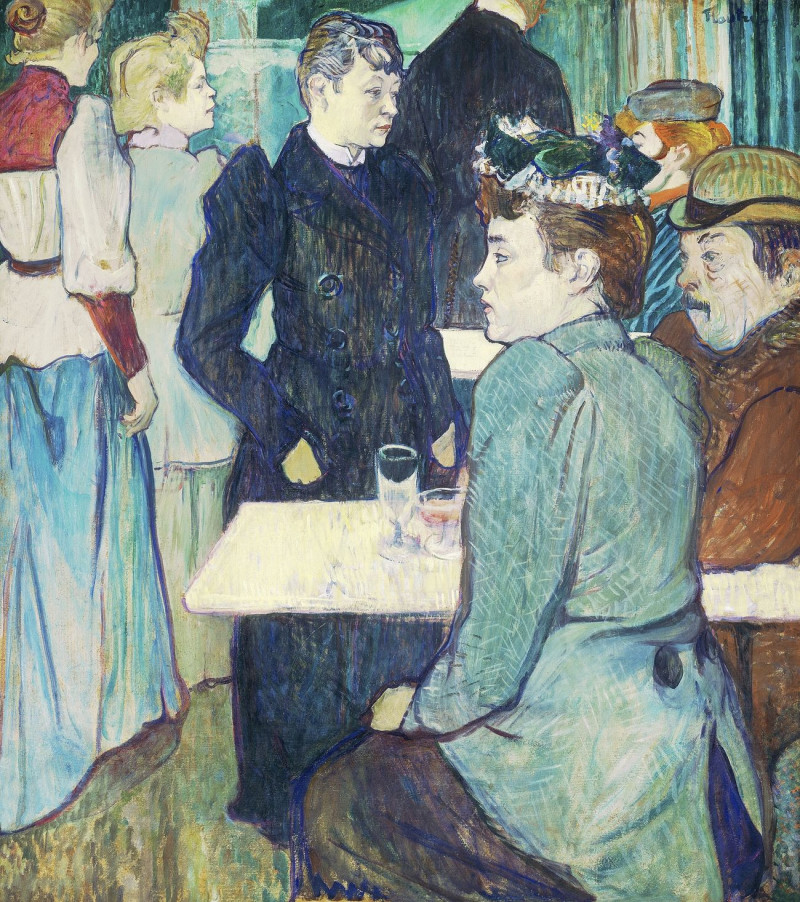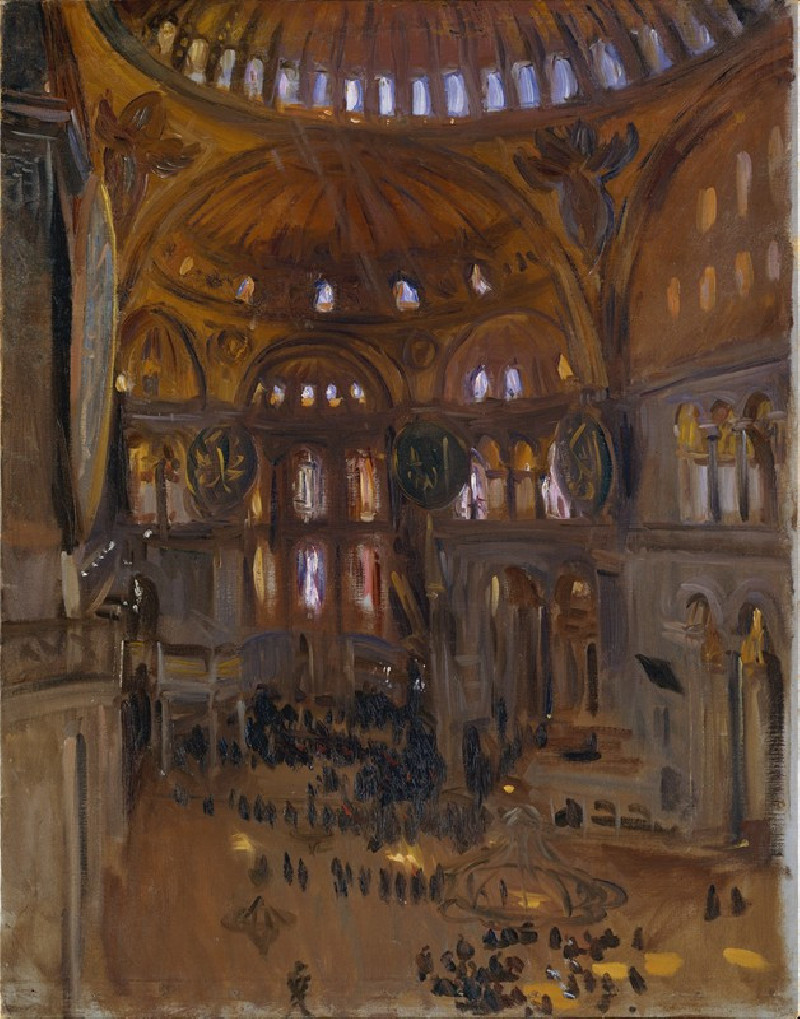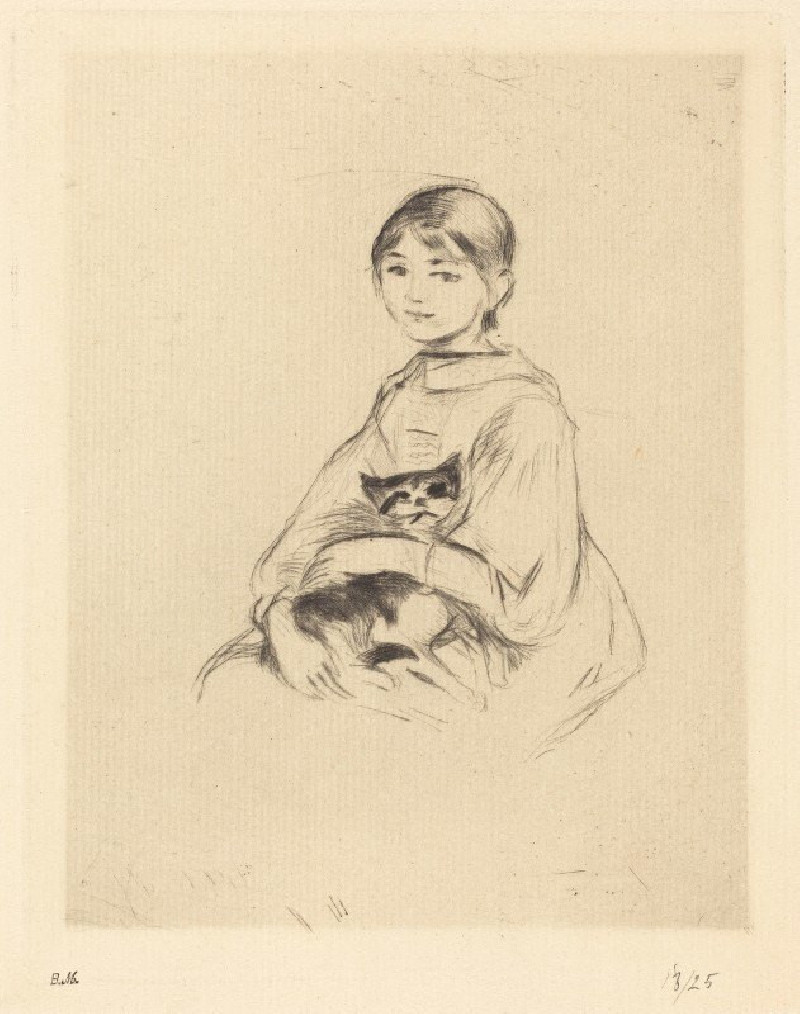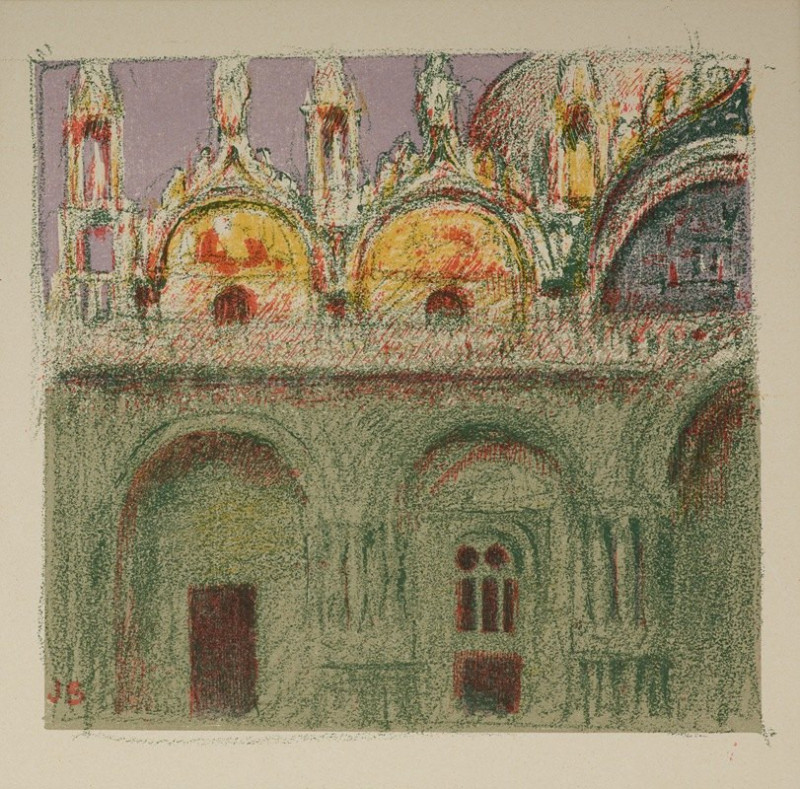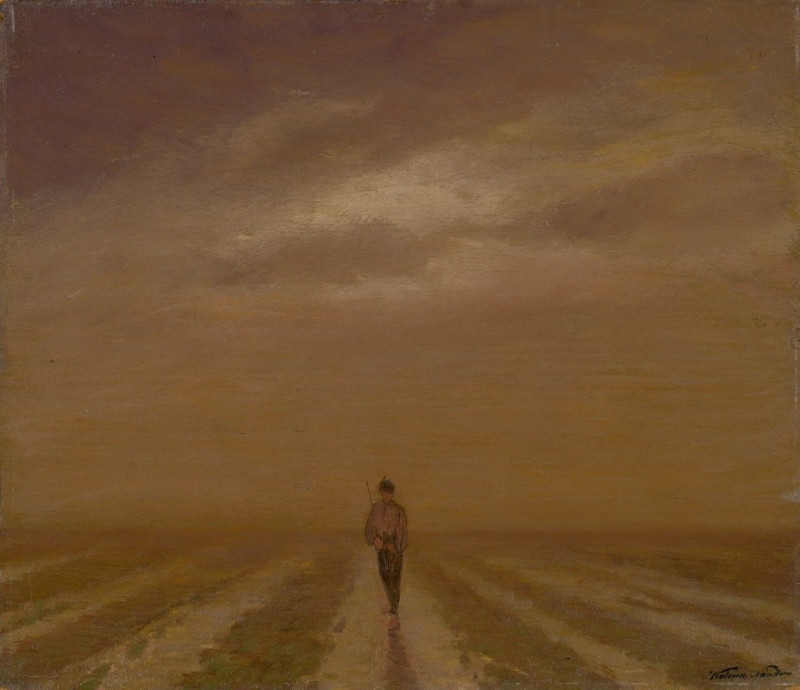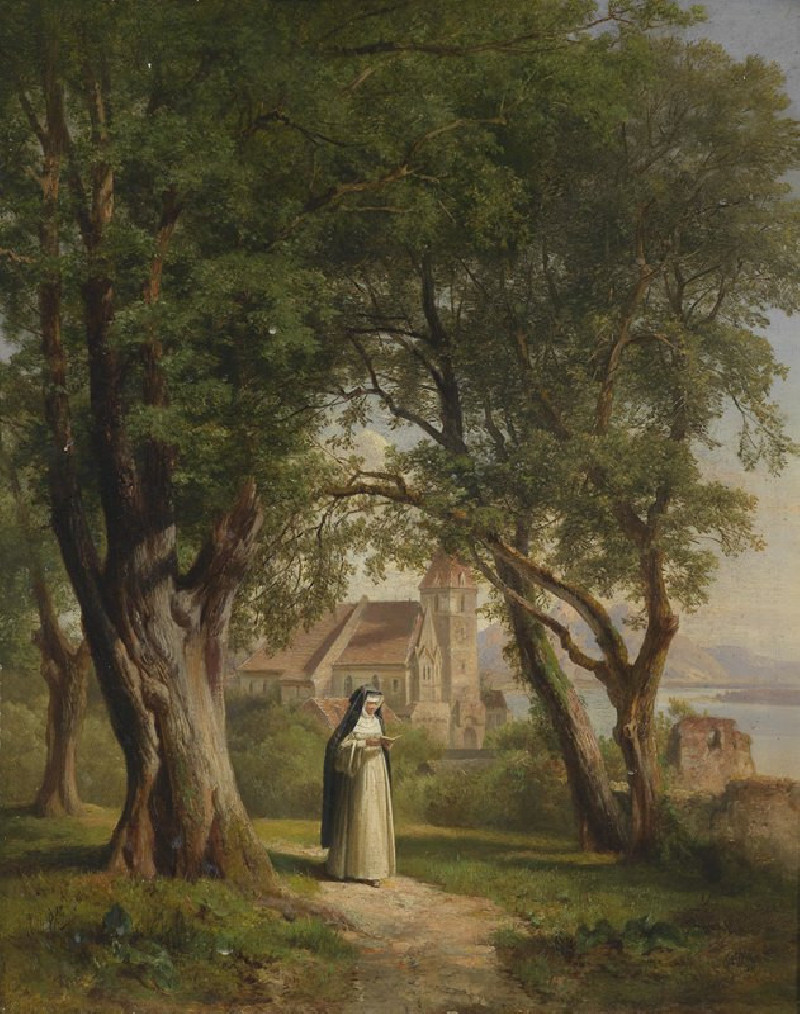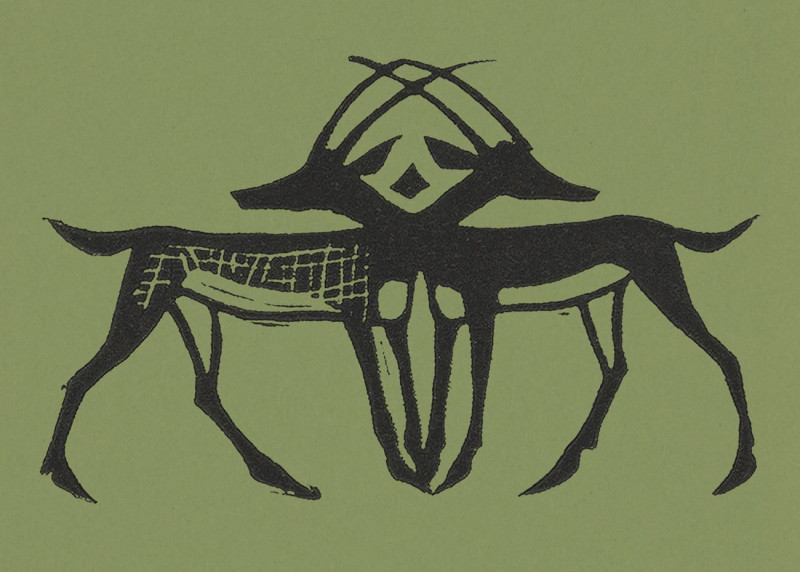Labor day (1909)
Technique: Giclée quality print
Recommended by our customers
More about this artwork
Samuel Ehrhart’s vivid painting "Labor Day (1909)" captures the essence of early 20th-century industrial America with a hint of satirical flair. The artwork presents a bustling scene filled with a diverse group of workers, waving banners that proclaim the rights and demands of labor groups. Demonstrators—spanning factory workers, miners, and even women in vivid period attire—carry placards advocating for various worker-centric issues like "Justice for Workers," and economic concerns such as "Golden Gulch $50 Mines."The composition is lively and chaotic, highlighting the vibrancy and tension of labor movements during that era. The painting portrays a spirited parade, with characters marching proudly, some playing instruments, others engaged in animated discussions, suggesting the celebratory yet assertive mood of Labor Day parades. On the left, a police officer watches over the scene, symbolizing the constant presence and scrutiny from authority. In the backdrop, city buildings and industrial smokestacks paint a picture of the burgeoning urban landscape.Additionally, Ehrhart interjects elements of humor and irony through exaggerated expressions and humorous signs, such as one reading “Montana Mule $1.00 He Kicks.” This injects a playful note into the artwork, making it not just a political statement, but also a piece of social commentary reflecting the complexities of labor relations at the time."Labor Day (1909)” by Samuel Ehrhart is more than just a depiction of a historical event; it is a lively narrative canvas that continues to speak volumes about the labor spirit, its challenges, and its crucial role in shaping the United States.
Delivery
Returns
American cartoonist and illustrator born in Pottsville, Pennsylvania, Ehrhart received his education in the New York City school system. Subsequently, he studied art in Munich. His work appeared in Harper's Monthly (1878-79), Puck (1880, and 1888-1913), and Judge (1887). He died in Brooklyn, New York on October 26, 1937.

